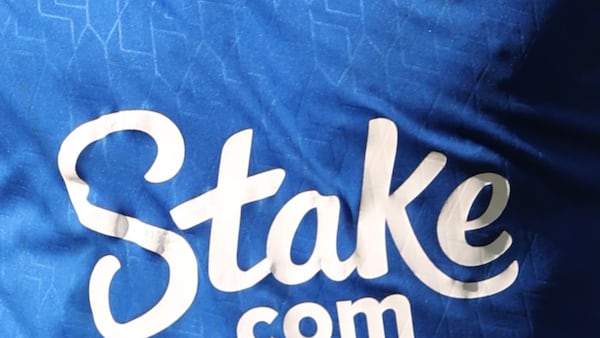- More than 70% of Solana’s SOL tokens are staked. Of those, less than 3% are in liquid staking protocols.
- “There’s a huge opportunity to unlock the other 97% of stake on the network,” one founder told DL News.
- The ease of staking on Solana, as well as the fear that liquid staking comes with non-zero risk, are roadblocks to greater liquid staking adoption.
Liquid staking is Ethereum’s largest sub-industry, accounting for its biggest protocol and a rapidly growing share of the collateral used in the blockchain’s other DeFi protocols.
On Solana, developers and investors wish that were the case.
Ethereum, Solana, and other blockchains that rely on proof-of-stake technology are secured by users who lock up — or stake — their tokens in exchange for a modest annual yield.
Those tokens are required for the complex but critical job of ordering and verifying transactions on blockchains that use proof-of-stake technology.
Although staked tokens are effectively locked away, liquid staking protocols issue redeemable, derivative tokens on a 1:1 basis, allowing users to take advantage of a blockchain’s staking yield — 5% for Ethereum, 7% for Solana — while putting them to use in other DeFi protocols for additional profit.
Once cheekily called liquid staking derivatives, or LSDs, the industry has since distanced itself from the term, potentially fearful of inviting regulatory scrutiny.
More than 70% of Solana’s SOL tokens have been entrusted to individuals, businesses, and protocols that use them to order and verify transactions.
Of those, however, less than 3% are entrusted to businesses that issue trade-able, derivative tokens known as liquid staking tokens.
Should that change, it could dramatically change DeFi on Solana.
NOW READ: Solana enjoys post-FTX ‘renaissance’ on back of network and DeFi upgrades
Only 3% of the more than $9 billion in staked SOL is in LSTs, Ben Chow, founder of Solana protocols Meteora and Jupiter, told DL News.
“A lot of work has been done to grow LST adoption and unlock this capital which will dramatically improve TVL and volumes.”
Lucas Bruder, CEO of Jito Labs, the company behind liquid staking protocol Jito, agreed.
“There’s a huge opportunity to unlock the other 97% of stake on the network for liquid staking,” he told DL News. “I don’t think any LST protocol has been able to figure out the correct marketing and narrative for that yet, we’re excited to take a swing at it and figure it out.”
But it’s easier said than done.
Low stakes
Ethereum switched to proof-of-stake technology almost one year ago, and only one in five Ether tokens, or roughly 26 million, have been staked, according to data compiled by pseudonymous data analyst Hildobby, of venture capital firm Dragonfly.
NOW READ: Ether liquid staking soars past $20bn as upgrade sparks rush for yield
It’s a pittance compared to other blockchains that have used proof-of-stake technology from their inception, such as Solana.
But the difference is in the liquidity.
On Ethereum, one in three staked tokens have been entrusted just to liquid staking protocol Lido. Altogether, almost 40% of staked Ether has been deposited in Ethereum’s many liquid staking protocols, according data from Elias Simos of research firm Rated.
Meanwhile, less than 3% of staked SOL has been deposited to Solana’s liquid staking protocols, according to Solana Compass.
Among Solana’s “top stakers,” the 1,651 people who have staked at least 5,000 SOL, only 152 hold liquid staking tokens, according to data platform Spire.
In May, Solana co-founder Anatoly Yakovenko took to Twitter, now known as X, to vent his frustration.
“The percentage of SOL in liquid staking and DeFi is abysmally small,” he wrote. “We need a community-wide effort to change it.”
‘Additional risk’
A survey of SOL stakers showed two reasons for the relatively low uptake, according to Alex Cerba, a core contributor at liquid staking protocol Marinade.
Marinade is Solana’s largest protocol and issues the mSOL liquid staking token.
The first issue was the potential tax implications of staking, Cerba told DL News. When a user deposits SOL and receives a liquid staking token, is that a taxable event? When exactly do they pay tax on the yield from their staked token?
Second, Solana was built to make staking easy and effectively risk-free. Stakers don’t always believe the additional yield available in Solana DeFi is worth the effort and risk that comes with entrusting millions of dollars to a protocol built by a third-party, audits be damned.
“Since I don’t get a lot of yield in DeFi, I’m taking additional risk with mSOL,” Cerba said, channelling survey respondents, “just to get 9% APY when I could get 7% just staking, with no smart contract risk.”
NOW READ: Demand surge for $16b Ether staking raises ‘mass slashing’ and code bug risks
Kel Eleje, a research analyst at Messari, agrees.
The validators who stake on users’ behalf often do so for free, he said. Moreover, users can withdraw their stake in two days, compared to the two-week period for those who stake ether.
“It essentially feels like liquid staking at slightly lower risk,” Eleje said.
To that end, Marinade recently released its own version of Solana’s built-in staking offering, Marinade Native. The hope is that people who have already staked their SOL use that and eventually transition to liquid staking with Marinade.
Over the summer, newer liquid staking protocols Jito and BlazeStake have soared, according to data from DefiLlama.
Eleje attributed the growth to airdrop speculation as well as their liquid staking tokens’ popularity on MarginFi, a lending protocol that has also grown in popularity.
But Bruder said users are likely drawn by innovation.
“When you look at jitoSOL usage in DeFi, the usage ratio is way higher than other LSTs,” he said.
Where Ethereum ‘is a bit ahead’
If another 4% of staked SOL were staked through protocols like Marinade or Jito, it would double the total value of crypto in Solana DeFi.
But Cerda isn’t sure Solana is ready for that.
“Some people are looking at it a bit naively, because they just look at the opportunity of having this much capital flowing into DeFi,” he said. “Also, the places where you can deposit a very large amount of funds in DeFi on Solana right now are quite scarce.”
DeFi on Solana would need to grow in order to handle a massive influx of liquid staking tokens, creating a chicken-and-egg problem.
“You would also need the DeFi protocols to go and to have more use cases, more volume, to basically take in all that capital,” Cerda said. “That’s where Ethereum is a bit ahead.”
Aleks Gilbert is a DeFi Correspondent for DL News. He is based in New York. Do you have a tip on a story? Reach him via email on aleks@dlnews.com.



